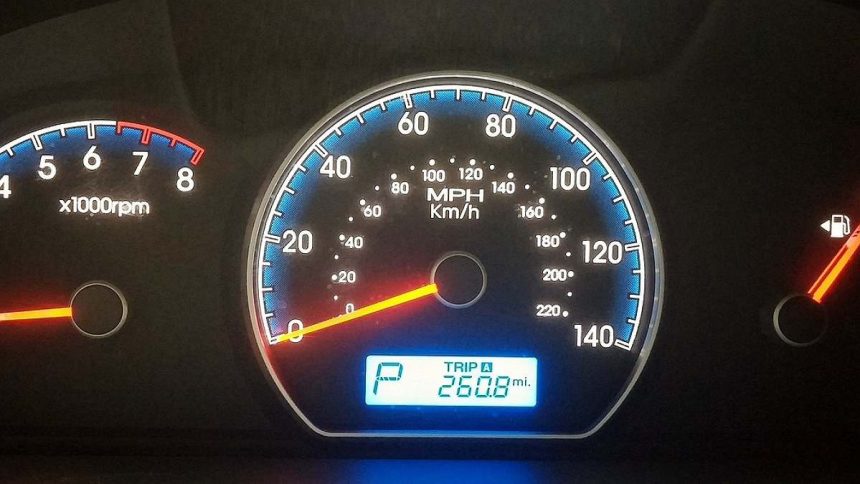What is a Speedometer?: A speedometer is an essential instrument found in every motor vehicle, designed to measure and display the vehicle’s current speed. Typically positioned on the dashboard, the speedometer offers drivers crucial real-time information about how fast their vehicle is traveling, allowing them to stay within legal speed limits and maintain safe driving practices.
How Does a Speedometer Work?
A speedometer operates using a complex yet fascinating mechanism that accurately reflects the vehicle’s speed. The key components involved in this process include:
- Flexible Cable: This metal cable connects the speedometer to the vehicle’s transmission system. The movement of the transmission directly affects the cable’s rotation.
- Gears: As the vehicle moves forward, the gears in the transmission rotate, which in turn rotates the connected cable.
- Magnet: Inside the speedometer, there is a magnet attached to the rotating cable. The faster the vehicle moves, the faster the magnet rotates.
- Speed Cup: The magnet is housed within a component known as the speed cup. Opposing magnetic forces interact with the speed cup, causing it to rotate in proportion to the vehicle’s speed.
- Gears and Pointers: The rotation of the speed cup is transferred through gears to the pointer on the speedometer’s dial. This pointer moves to indicate the vehicle’s speed in miles or kilometers per hour.
Odometer: Tracking Distance Traveled
In addition to the speedometer, most vehicles are equipped with an odometer, a device that measures the total distance a vehicle has traveled. The odometer is invaluable for tracking mileage, which is useful for maintenance schedules, resale value, and overall vehicle lifespan. Some vehicles also feature a trip odometer, which allows drivers to track distance for a specific journey or trip, with the ability to reset it as needed.
How Does an Odometer Work?
The odometer operates through a combination of gears and drums:
- Gears: As the vehicle moves, the rotation of the transmission gears triggers the odometer’s internal gears.
- Drums: These gears rotate the odometer drums, with a typical gear ratio of 1000:1. This means the drum will complete one full rotation for every 1,000 kilometers or miles traveled.
- Marks and Digits: Each drum contains ten marks, representing tenths of a kilometer or mile. The odometer’s display updates as the vehicle moves, indicating the total distance the vehicle has covered.
The Importance of Speedometers and Odometers
Both the speedometer and odometer play crucial roles in the overall functionality and safety of a vehicle. The speedometer helps drivers maintain control of their speed, while the odometer provides valuable information about the vehicle’s usage and wear. Together, these instruments ensure that drivers can make informed decisions on the road, promoting safe and efficient driving.
understanding how these devices work not only aids in better vehicle maintenance but also enhances the driving experience. Stay aware of your speed and mileage for a safer journey!




